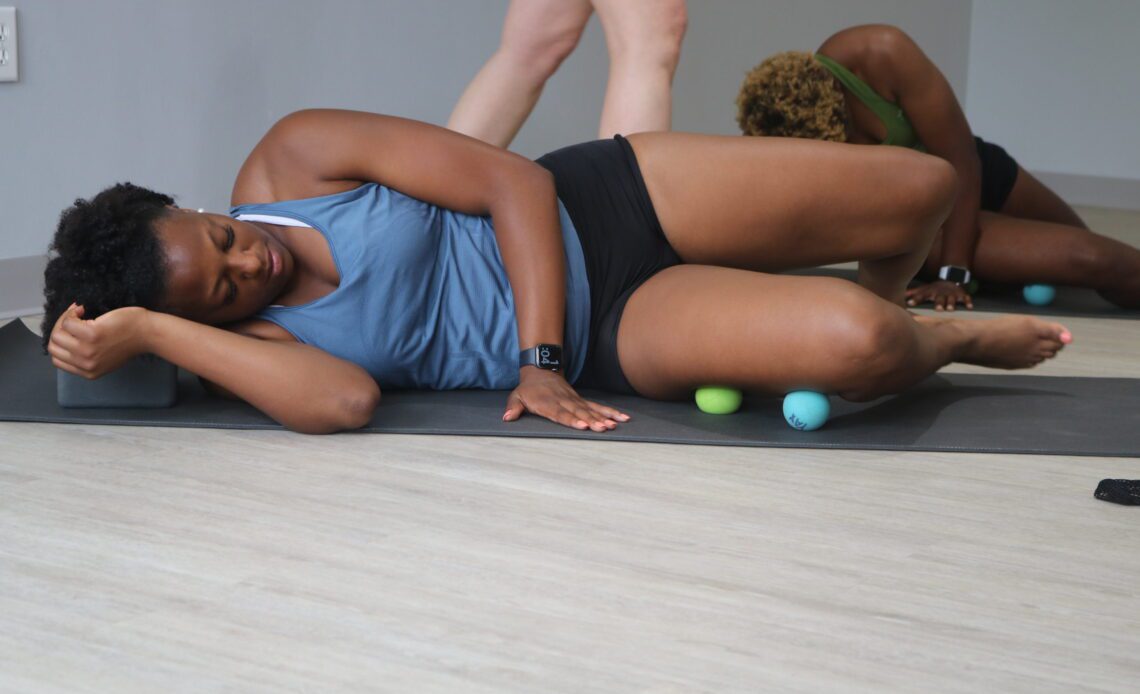During the off-season, athletes have quite a bit of leeway on what they should be focusing on. Their training focus depends on their health. For example, if an athlete is healthy and ready to go, he/she can have a pretty rigorous off-season that includes practicing vinyasa, or dynamic, yoga. However, if the athlete incurred an injury during the season it’s important to focus on rehab, physical therapy, or corrective flexibility.
Corrective flexibility is designed to correct common postural dysfunctions, muscle imbalances, and joint dysfunctions. Corrective flexibility training incorporates self-myofascial release (SMR), static stretching, and neuromuscular stretching (NMS).
Let’s take a closer look at why corrective flexibility is beneficial for volleyball athletes:
Self-myofascial release (SMR) is a flexibility technique that focuses on the neural and fascial systems in the body. SMR concentrates on alleviating myofascial trigger points and areas of hyper-irritability located within a band of muscle. This form of flexibility training incorporates the concept of autogenic inhibition to improve soft tissue extensibility. Once a sensitive region has been identified, a foam roller or therapy ball(s) is held on that region for 30 seconds.
Connective Tissue
Fascial systems in the body are composed of connective tissue. Connective tissue is composed of two types of protein-based fibers: collagenous and elastic fibers.
Collagenous fibers are composed mainly of strong, inelastic collagen, one of the most common proteins in the body.
Elastic fibers contain elastin, a highly extensible protein capable of returning to its initial length after being stretched or compressed. Connective tissues of importance to flexibility and the musculoskeletal system include tendons, which connect muscle to bone; ligaments, which connect bone to bone; and fascia, which bind muscles into separate groups.
Connective tissue has multiple functional categories including:
- Enclose and separate tissues
- Connect dissimilar tissues
- Support and movement
- Energy storage
- Cushion and insulate
- Transport
- Protection
Healthy Joints
All tissues contribute to joint stiffness to varying degrees. Joint capsule and ligaments represent 47% of joint stiffness, followed by muscle fascia (41%), tendon (10%), and skin (2%). Although the myofascial system is ranked second, this tissue is a primary focus of a flexibility routine. Tissue properties of the muscle and fascia allow for greater elasticity…
Click Here to Read the Full Original Article at Junior Volleyball Association…

